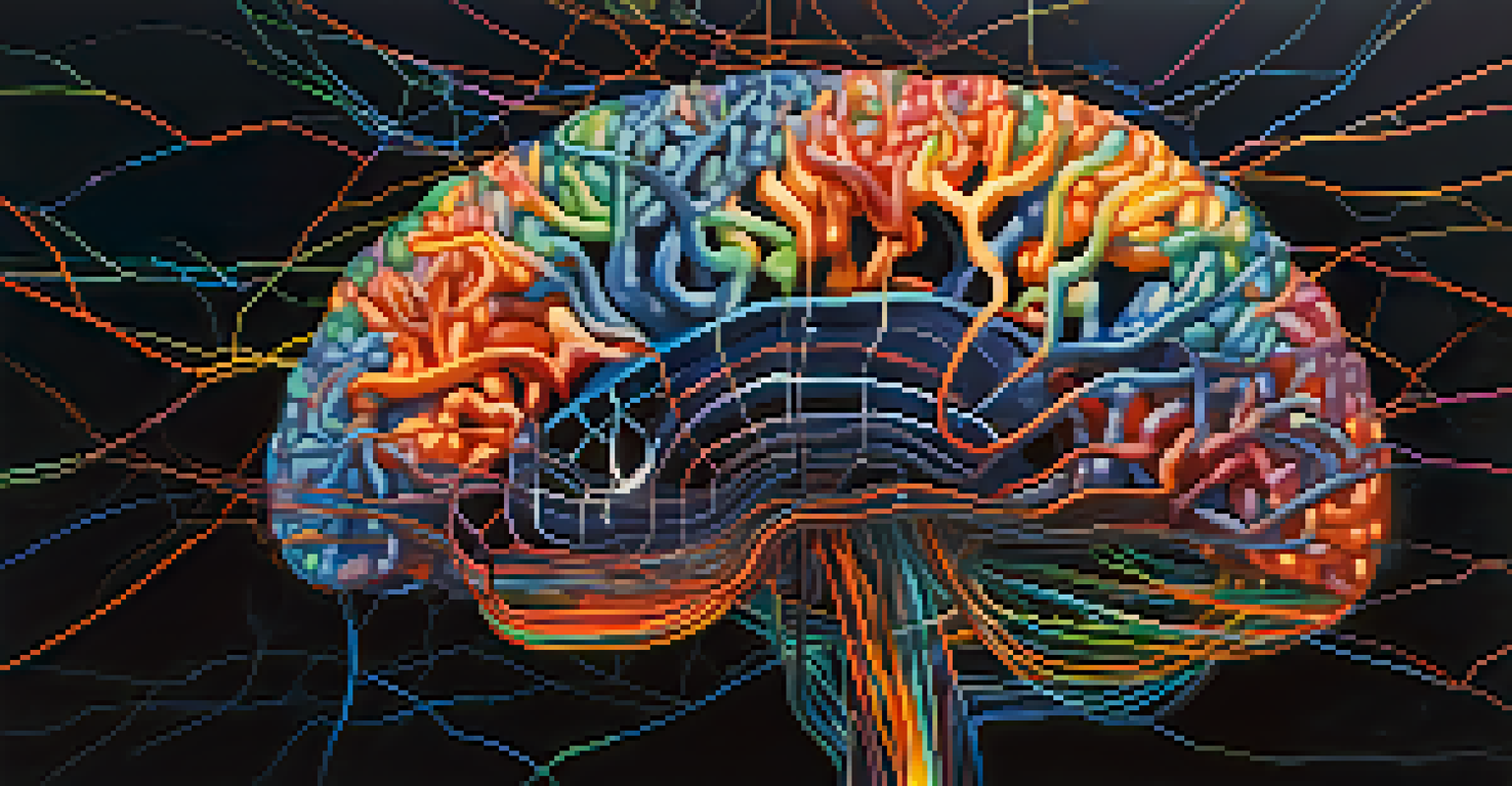Entheogens and Neuroplasticity: Emerging Research Insights

Understanding Entheogens: More Than Just Psychedelics
Entheogens are substances that, when ingested, can facilitate profound spiritual or psychological experiences. Often associated with traditional practices and indigenous cultures, these compounds include psilocybin, ayahuasca, and peyote. While commonly labeled as psychedelics, entheogens have a unique aspect—they’re often used in ceremonial contexts to foster a connection with the spiritual realm.
Psychedelics can help us to understand the brain, allowing us to tap into our own potential for healing.
Recent research is beginning to unveil the potential cognitive benefits of entheogens, especially in relation to neuroplasticity. Neuroplasticity is the brain's ability to adapt and reorganize itself by forming new neural connections throughout life. This ability is crucial for learning, memory, and recovery from brain injuries.
By examining how entheogens may promote neuroplasticity, scientists are exploring exciting new avenues for mental health treatment. For instance, studies suggest that these substances can enhance brain connectivity, potentially leading to improved emotional regulation and cognitive flexibility.
The Science of Neuroplasticity: What You Need to Know
Neuroplasticity is a fascinating phenomenon; it allows the brain to change and adapt in response to experiences and environments. Imagine your brain as a forest: the more you walk a path (or use a neural connection), the clearer it becomes. Conversely, if you stop using that path, it may become overgrown and less accessible.

There are two main types of neuroplasticity: functional and structural. Functional plasticity refers to the brain's ability to shift functions from damaged areas to healthy ones, while structural plasticity involves physically changing its structure. Both types are essential for learning new skills, adapting to changes, and recovering from injuries.
Entheogens Enhance Neuroplasticity
Certain entheogens, like psilocybin and ayahuasca, promote neuroplasticity, potentially improving cognitive function and emotional well-being.
Understanding how neuroplasticity works is crucial in evaluating the impact of entheogens. When the brain is encouraged to form new connections, it can lead to significant improvements in cognitive functions and emotional well-being, which is an exciting prospect for mental health therapies.
Entheogens and Their Role in Enhancing Neuroplasticity
Emerging studies indicate that certain entheogens may actively promote neuroplasticity in the brain. For example, psilocybin, the active compound in magic mushrooms, has been shown to increase the growth of dendritic spines—tiny protrusions on neurons that facilitate communication between brain cells. This growth can lead to a more robust neural network and enhanced cognitive function.
The use of psychedelics in therapy is not just a passing trend; it represents a profound shift in our understanding of mental health and the brain's capacity for change.
Another entheogen, ayahuasca, has been linked to increased levels of brain-derived neurotrophic factor (BDNF). BDNF is a protein that supports neuron survival and growth, thus playing a vital role in learning and memory. Higher BDNF levels may contribute to improved mood and cognitive performance, making ayahuasca a topic of interest for researchers.
These findings suggest that entheogens might not only offer a way to explore consciousness but could also serve as powerful tools for therapeutic interventions, helping individuals break free from negative thought patterns and emotional distress.
Clinical Trials: Testing the Waters of Entheogens
Clinical trials are crucial in validating the therapeutic potential of entheogens. Recent studies have explored their effects on conditions like depression, anxiety, and PTSD, with promising results. Participants often report significant improvements in mood and emotional resilience after guided sessions with entheogens under professional supervision.
For instance, research conducted on psilocybin-assisted therapy has shown remarkable success in reducing depression symptoms. Patients often describe their experiences as life-changing, with many reporting lasting positive effects even months after treatment. Such findings provide a solid foundation for further exploration of entheogens in clinical settings.
Therapeutic Potential in Trials
Clinical trials show promising results for entheogens in treating conditions such as depression and PTSD, highlighting their therapeutic benefits.
These trials not only help to establish the safety and efficacy of entheogens but also enhance our understanding of how these substances might harness neuroplasticity for healing. As more studies emerge, the potential for integrating entheogens into traditional therapeutic practices becomes increasingly viable.
Potential Risks and Ethical Considerations
While the potential benefits of entheogens are exciting, it's essential to consider the risks and ethical implications. Misuse of these substances can lead to adverse psychological effects, particularly in individuals with underlying mental health conditions. Hence, responsible use under professional guidance is paramount.
Moreover, the cultural significance of entheogens cannot be overlooked. Many indigenous communities have used these substances for centuries in spiritual practices, and it’s vital to respect and honor those traditions. The commercialization of entheogens raises questions about cultural appropriation and the ethical responsibilities of researchers and practitioners.
Navigating the landscape of entheogens requires a balanced approach, weighing both potential benefits and concerns. Ongoing dialogue about ethics, safety, and respect for indigenous practices is crucial as we move forward in this burgeoning field.
Future Directions: A New Era of Mental Health Treatment
The intersection of entheogens and neuroplasticity opens up a new frontier in mental health treatment. As research continues to unfold, we may witness a paradigm shift in how we understand and treat psychological conditions. The potential for entheogens to facilitate profound healing experiences is a promising avenue for many.
Future studies will likely focus on understanding the mechanisms behind how entheogens influence neuroplasticity. This could lead to the development of targeted therapies that maximize the benefits of these substances while minimizing risks. Imagine a world where mental health treatment is personalized and rooted in a deeper understanding of the brain’s adaptability.
Ethics in Entheogen Research
The use of entheogens raises important ethical considerations, particularly regarding cultural significance and responsible usage in therapeutic settings.
As we embrace this new era of research, it’s important to maintain an open mind and foster a culture of curiosity. The exploration of entheogens could lead to life-changing therapies, offering hope to those who have struggled with conventional treatments.
Conclusion: Embracing the Potential of Entheogens
In conclusion, the emerging research on entheogens and neuroplasticity offers a glimpse into a future where these substances could play a key role in mental health treatment. By understanding how entheogens can promote brain adaptability, we can harness their potential for healing and transformation.
As we move forward, it’s crucial to approach this field with a sense of responsibility and respect. Balancing the excitement of new discoveries with ethical considerations will ensure that we honor the traditions from which these practices arise while paving the way for innovative therapies.

Ultimately, the journey into the world of entheogens and neuroplasticity is just beginning. With each study and each discovery, we step closer to unlocking the mysteries of the brain and the powerful potential of these remarkable substances.